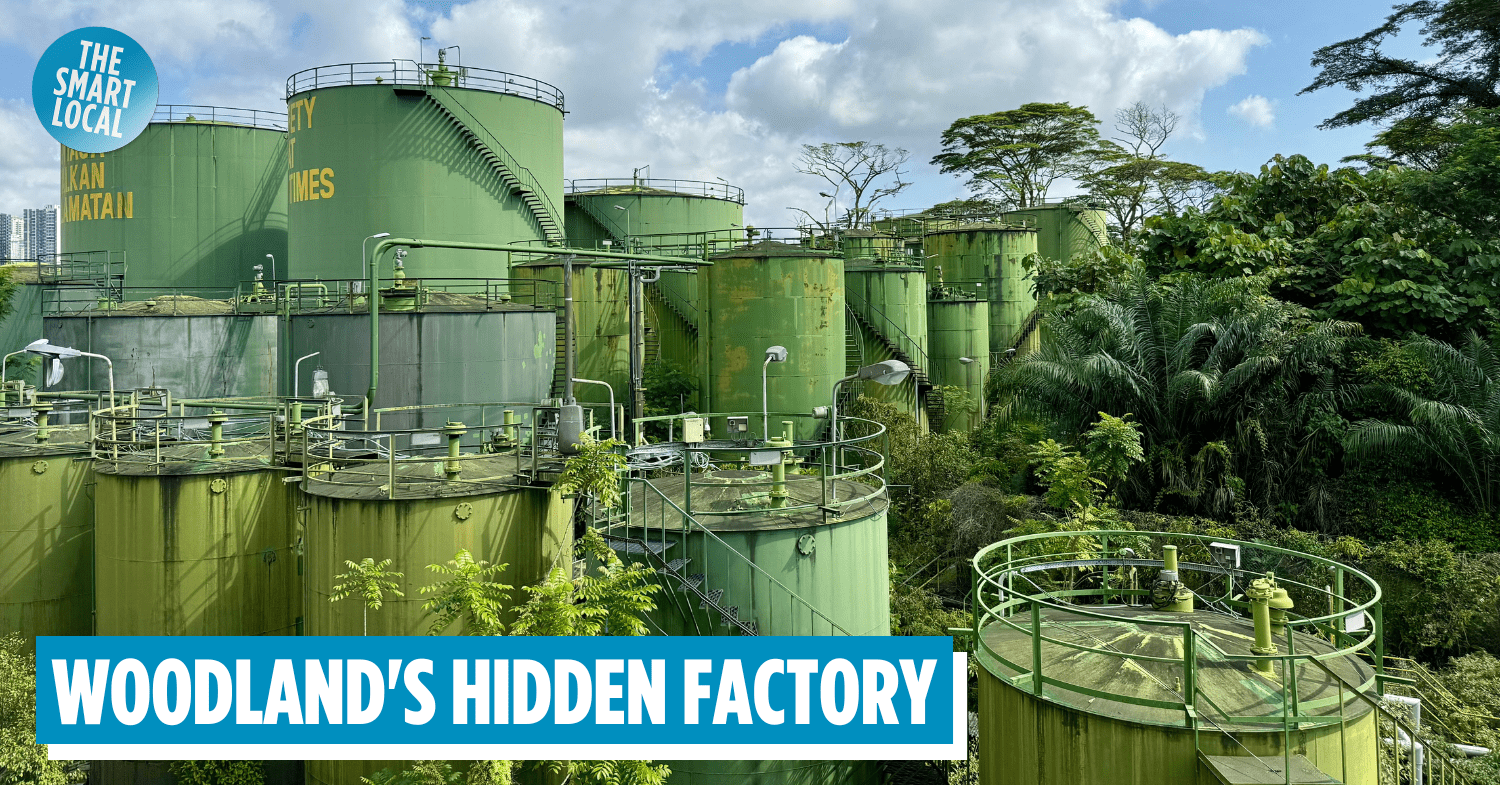Industrial Relics & Wartime Secrets Tour – The Smart Local review
Think walking tours and places like Little India or Chinatown might come to mind. However, the tour we’re talking about is a little different. From stepping inside a former Shell plant and witnessing scenes that look straight out of an apocalyptic movie set, to listening to lesser-known WW2 stories, the Industrial Relics & Wartime Secrets Tour is an experience you won’t want to miss.
If you love a little adventure, this one brings you to some truly hidden gems of Woodlands. Even history buffs might learn a new thing or two about Singapore that now would be hard-pressed to find in school textbooks.
Everything you need to know about this Hidden Heritage Tour
The tour is helmed by local husband-wife duo Stanley and Amanda who started Hidden Heritage Tours just last year. In the true spirit of urban exploration, these 2 met while finding abandoned places in Singapore,
They bring you to 4 sites during this 3.5-hour adventure: an obsolete industrial plant, a former mental asylum, the site that once housed a refugee camp, and an air raid shelter from the time of WW2.
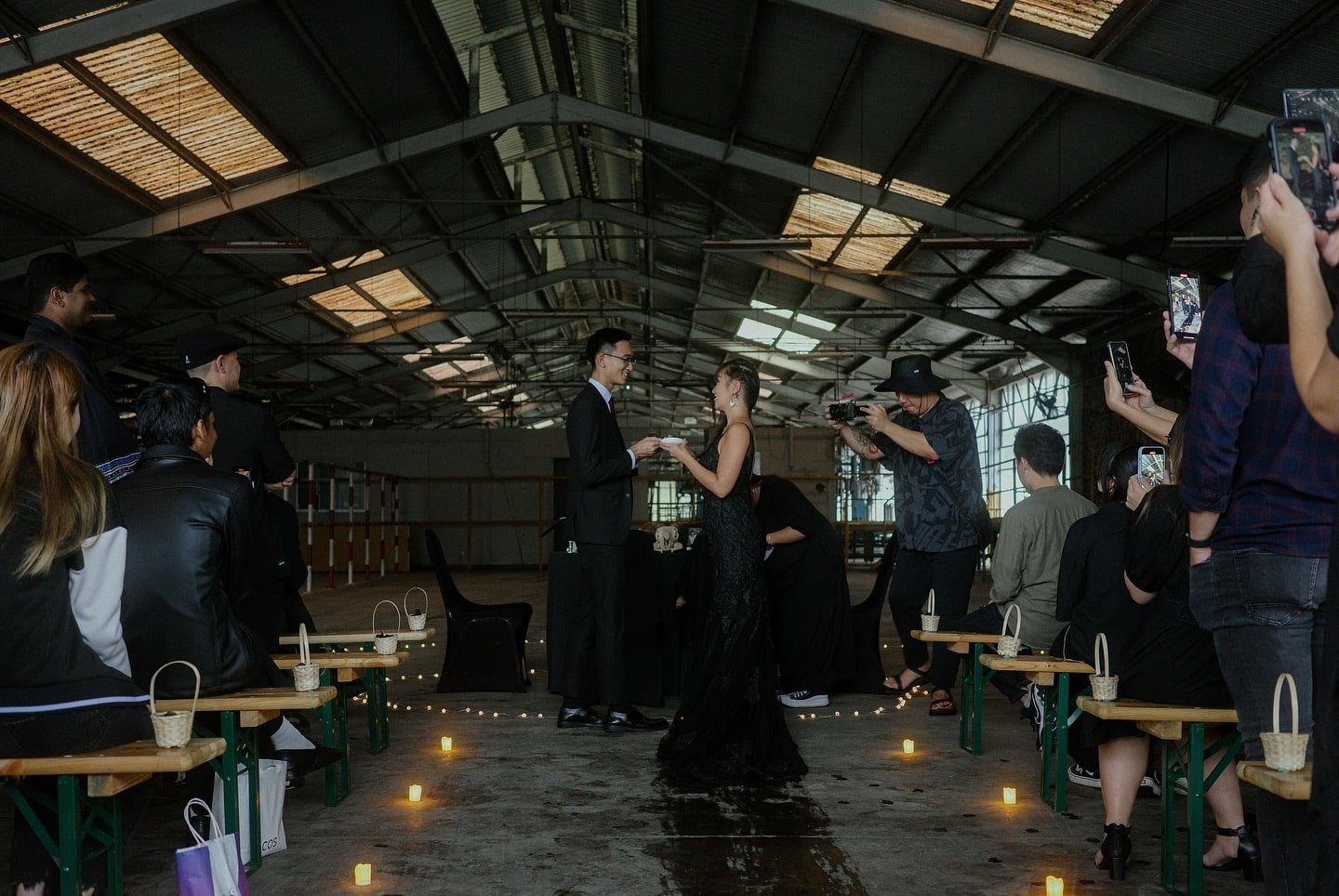
Imagine a wedding venue with no electricity, no running water, no toilets, and basically no functioning facilities.
Image credit: @hiddenheritagesg via Instagram
You might be wondering how they discovered these places, given that most of the neighbourhood’s residents don’t even know about their existence. We’ll let the couple share their full story but it revolves around finding a unique wedding venue when authorities turned down their request to use Old Changi Hospital.
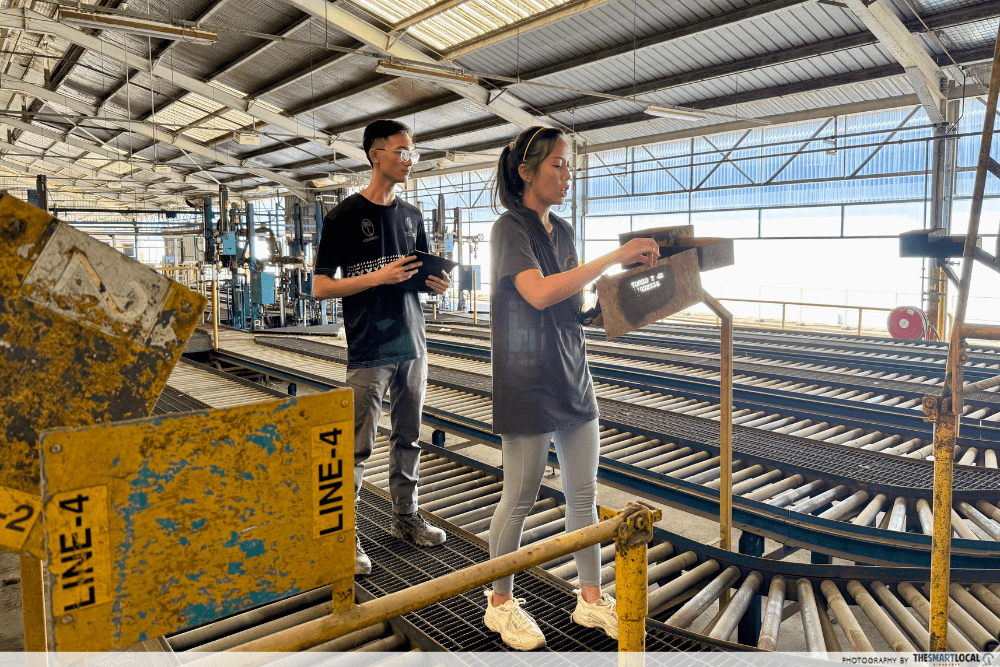
You’re encouraged to ask questions and they’ll try their best to provide answers.
The tour might seem like it comes at a premium price of $98/pax but having gone through the experience firsthand, we’d say it’s well worth the money. For one, there’s no other way to enter the defunct plant as it’s usually closed off to the public except when tours are happening, so you’re gaining exclusive entry… in a legal manner.
More importantly, the guides make the experience so much better with their knowledge of the spaces and the people that used to occupy them. The research and effort that has gone into reaching out to senior residents in the area, past employees, and history experts to uncover forgotten stories is commendable. We’re quite sure there are anecdotes that you won’t hear anywhere else.
For example, how the name Woodlands came to be. Fun fact: The area was literally woodlands, occupied by tamarind trees and dotted with kampungs.

Apart from history buffs and urban explorers, this one’s for industrial photography enthusiasts too. We lost count of the number of stunning photo spots the place has to offer and you’re given enough free time to roam the grounds to find the perfect backdrops.
Don’t miss the opportunity to capture a place that has been frozen in time. It won’t be around for long as the plant is set to be removed as part of future plans to expand the Woodlands Checkpoint.

Dystopian vibes at the office building.
Exploring the defunct Shell Lubrication Blending Plant
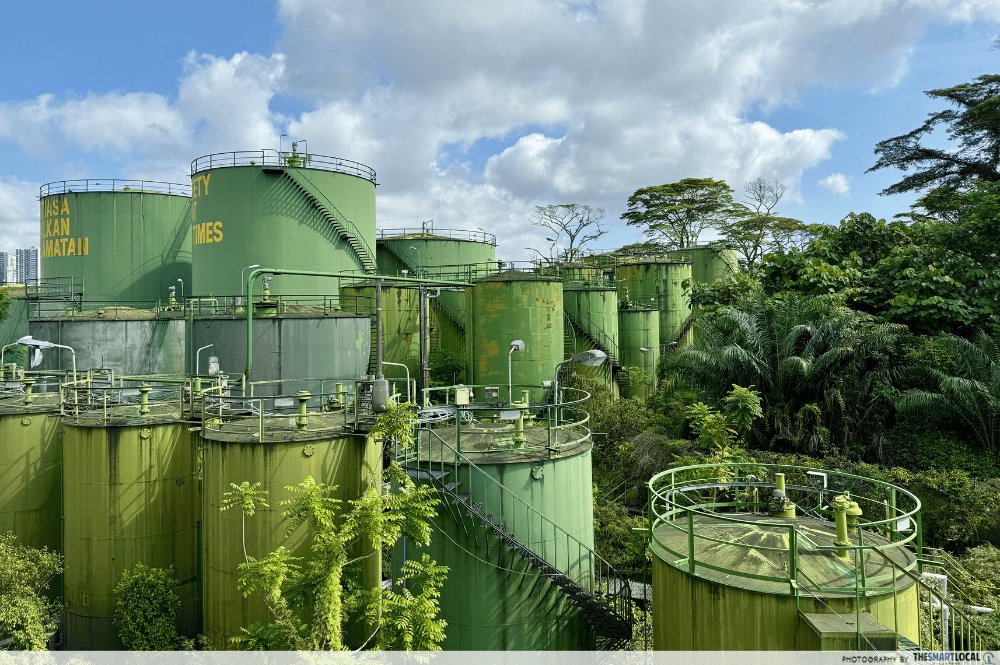
The tour starts at the Former Shell Lubrication Blending Plant in Marsiling. What in the world is a lubrication blending plant? In simple words, the raw materials stored at Shell’s energy and chemicals park on Pulau Bukom were transported to this plant and refined into different lubricants such as oil and grease which are used to run machinery.
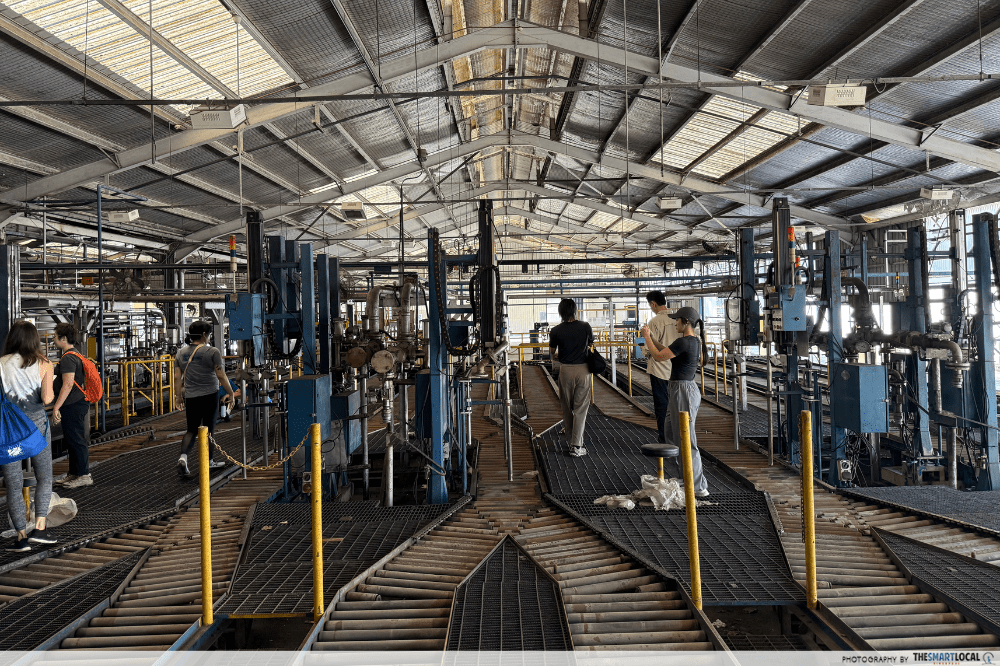
Back in the day, part-time employees were paid $25/day to work at the plant.
Before the plant was built, the space was occupied by a naval base that was formed by the government before the war. Then in 1948, the facility supplied oil to British vessels, and was finally taken over by Shell in the 60s during the period of industrialisation.

These $300,000 tanks were made to last forever and have been sold to the government for the price of scrap metal.
Once you’re there, it feels like the place has been abandoned for decades but in reality, it only closed down in 2018 because Shell needed a bigger and up-to-date facility. Also, it is still being guarded by security personnel. It made more economical sense to move to Tuas and build a new plant with high-tech equipment rather than transport the current manual labour-intensive machinery.
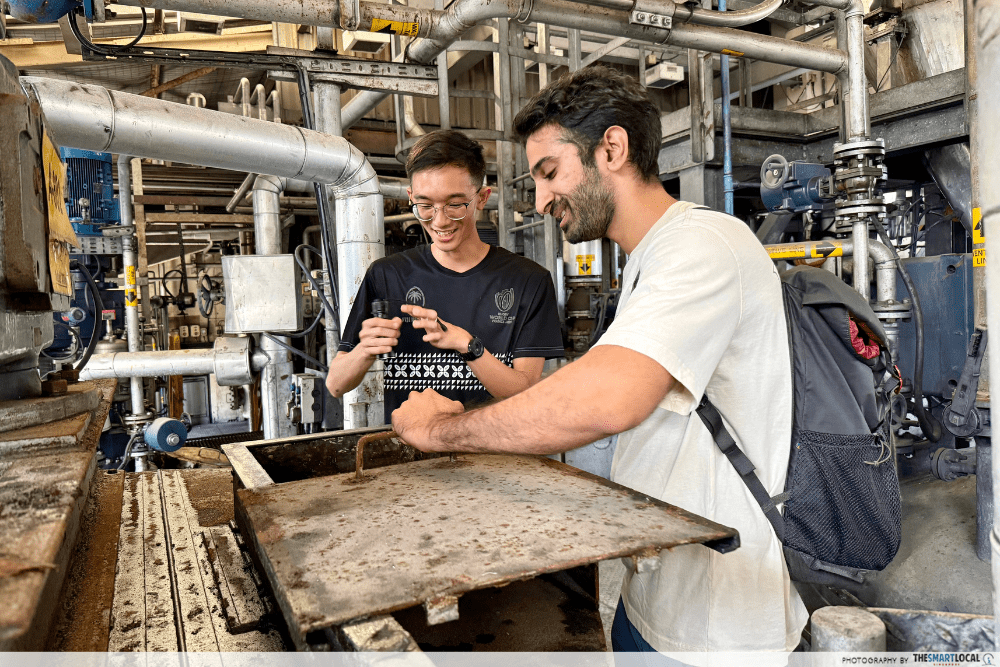
The tour is interactive at some points, allowing you to get up close and personal with the old machinery.
About 2 hours of the tour go into exploring this site alone. At each key spot, Stanley and Amanda paint a picture of what used to happen on the premises. Apparently, they reached out to a Facebook group consisting of old Marsiling residents to ask if anyone knew someone who used to work in this plant. And they received plenty of responses which led them to collect some interesting information.
One of the messages they received came from a resident living in the nearby HDB block who used to observe heavy vehicles coming in and out of the facility as a kid. He never knew what was happening until he attended the tour and finally quenched his childhood curiosity.
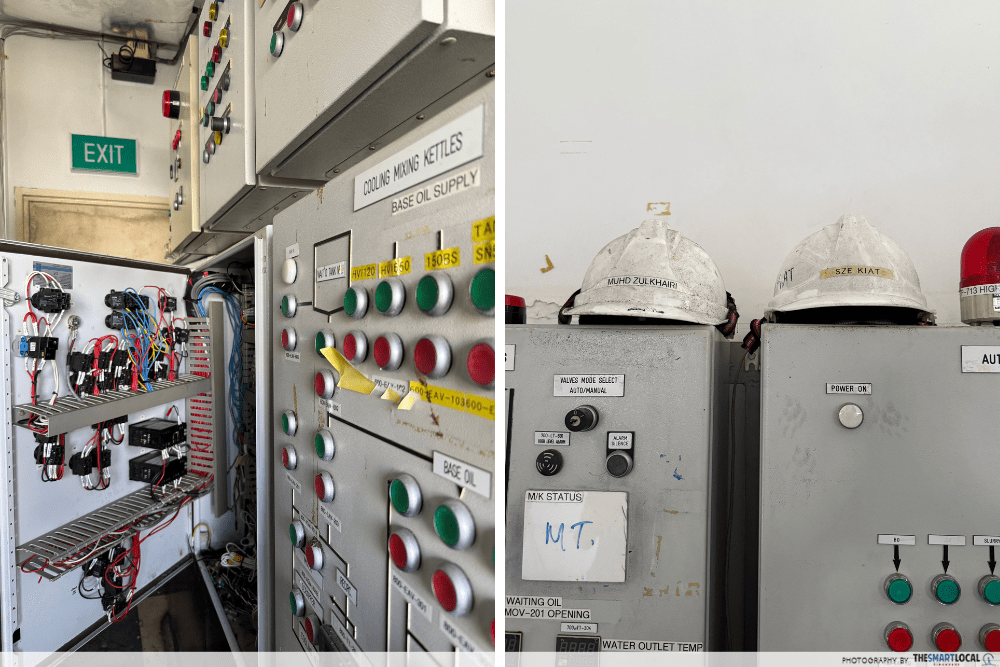
Another story comes from a former employee who worked in the Control Room who was surprised to learn his and his manager’s helmets could still be found on the premises.
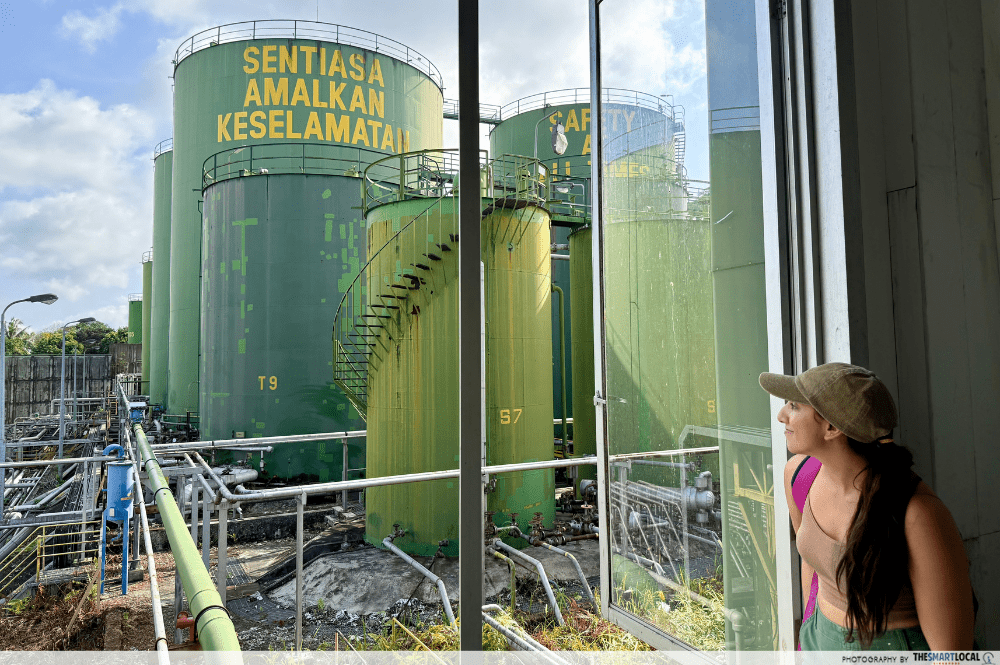
Pro-tip: one of the best views of the Shell plant comes from a huge window in this very room. It’s also one of the few rooms that was air-conditioned at that time.

And yes, you can see the JB Causeway in the distance too.
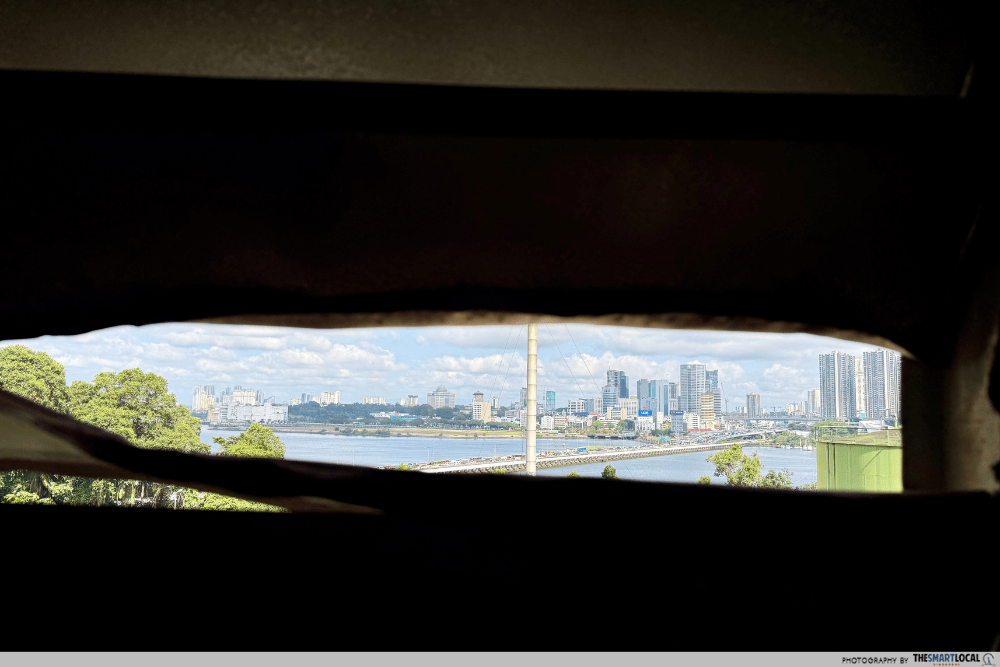
Speaking of which, there’s a bent shutter on one of the floors where a dedicated employee used to peep out to help check on the status of traffic before the time of Google Maps. Anyone who wanted to know whether the causeway was clear or not would call them to find out.

One of the most interesting things about exploring unoccupied spaces is discovering the spiritual and cultural elements left behind that tell us more about the place.
When questioned about whether each tour differed in nature, the guides had this to say, “the flow is pretty much the same, but the experience differs based on the dynamics of the group”. Sure enough, it was a tour attendee from JB who enlightened us about this artefact found dangling on one of the office doors. She mentioned that it resembles a prop used in the traditional Barong Dance.
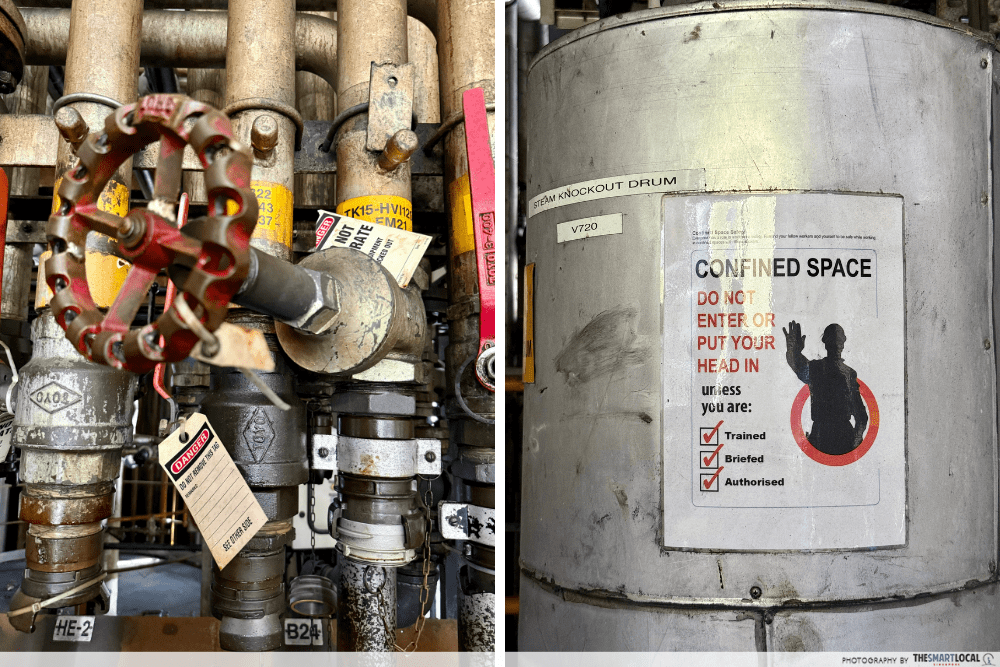
Spot some interesting signs along the way and grab the rare chance to explore an industrial area without the usual dangers. Don’t worry, a risk assessment has been done to ensure that there are no immediate hazards at the plant and since nothing is functioning anymore, it is relatively safe.
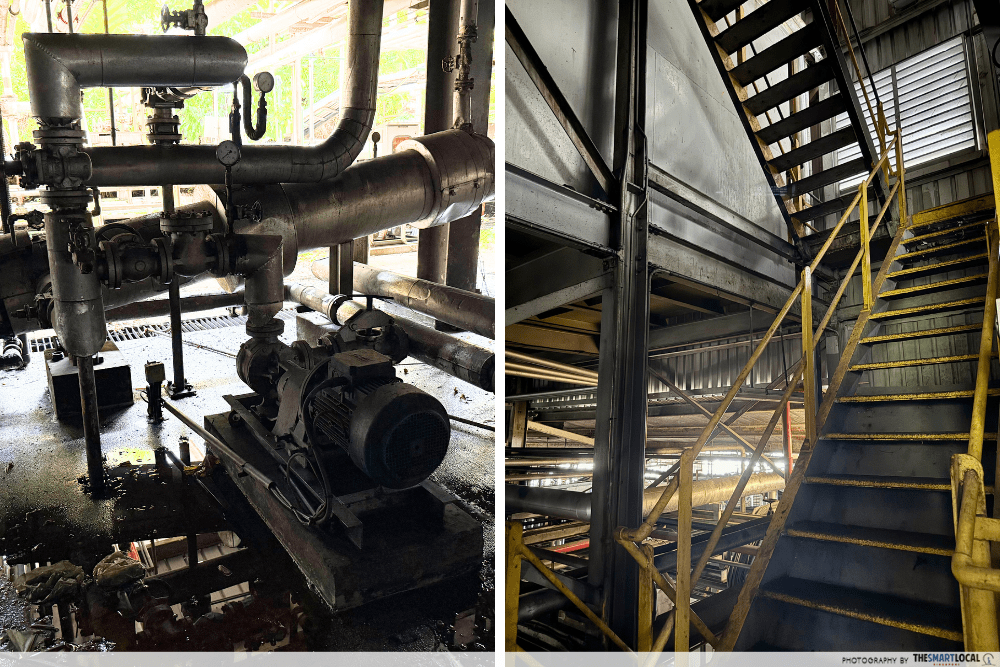
The only things to take note of are the greasy floors which could be slippery in some areas and the narrow and steep steps. When going up and down, we suggest holding the handrails for support.

What were some of these vintage-looking machinery used for? Why are there so many different coloured pipes? Is that white paint or something else? Spoiler alert, it’s not paint. To find out the answers to all these questions and hear so many more interesting stories, you’ll just have to attend the tour.
That marks the end of exploring the plant. The next location is a short distance away and requires a 3-minute drive or taking the bus down a few stops.
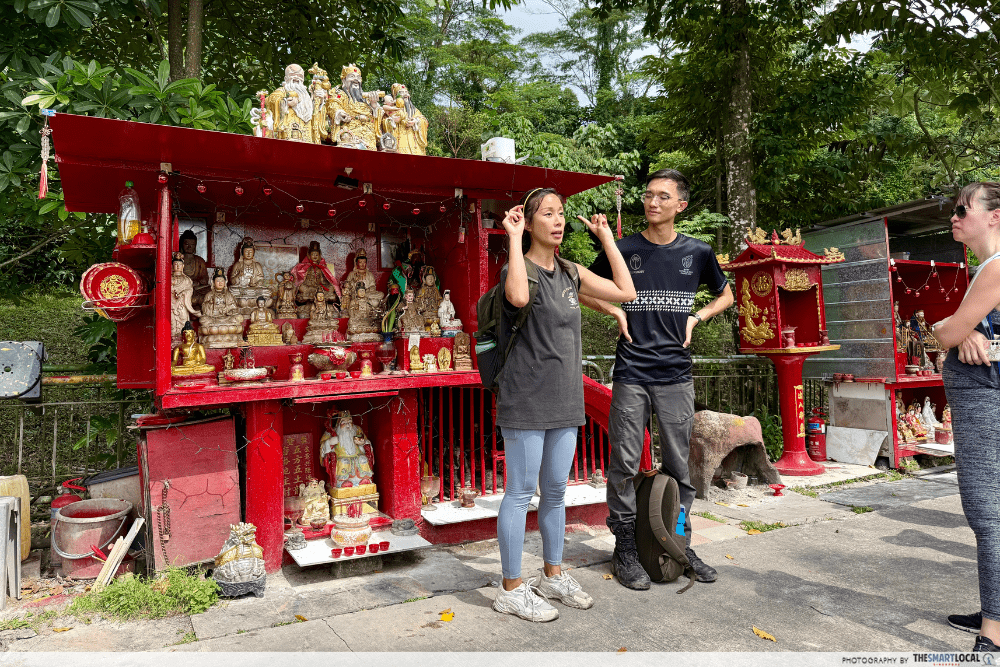
But before that, there are a few more fun stories to be told about Kampung Sungei Cina and the growing number of deities being collected along this road.
Learning more about a former mental asylum
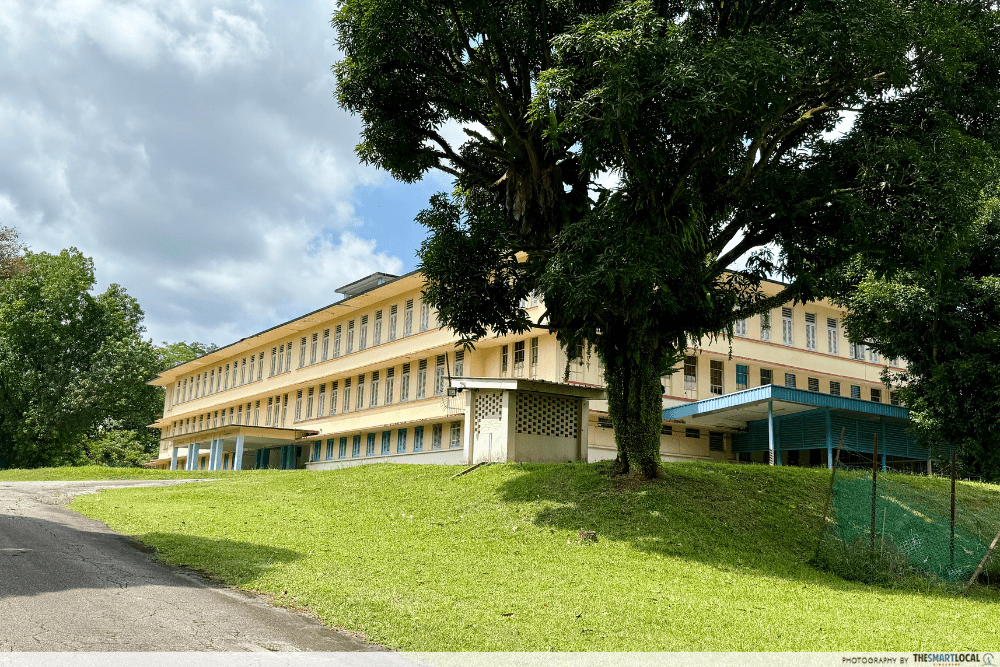
As part of the tour, about 15-20 minutes are spent outside the gates of View Road Hospital, another uninhibited building with an intriguing history. For the uninitiated, this once used to be an asylum for patients with mental illnesses who could not be housed in the overcrowded Woodbridge Hospital. It is said that they were being treated for long-term schizophrenia and screams could be heard from inside the building.
Taxi uncles will tell you the place is haunted but who knows? It was eventually turned into a foreign workers’ dormitory but now remains unoccupied. Fortunately, though, this building is going to be preserved and turned into a light industrial area.
Hearing stories about Singapore’s first & only refugee camp
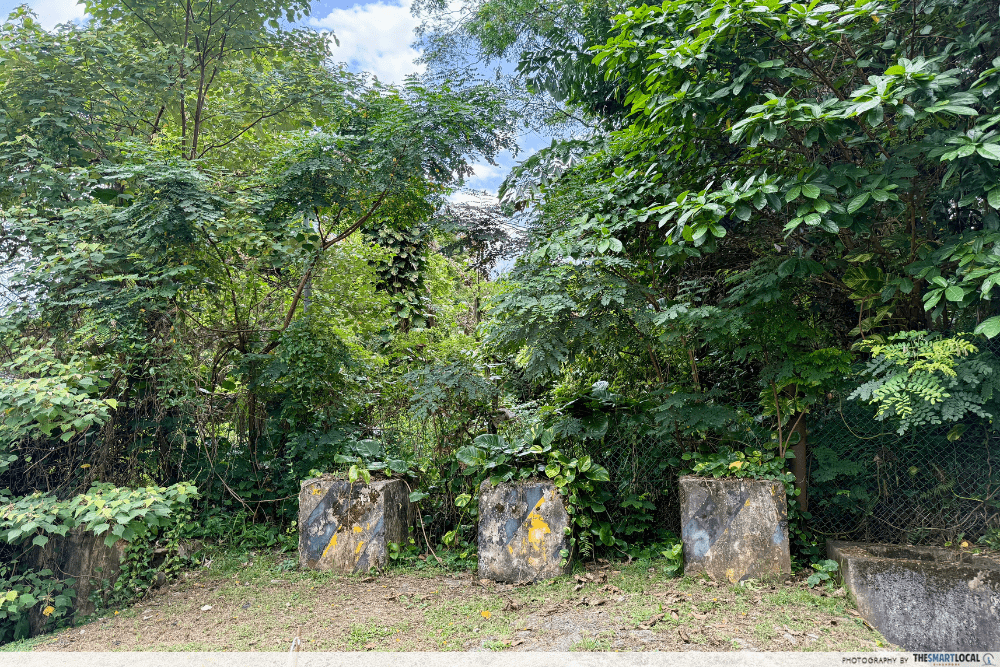
What used to be the entrance to the camp.
Just next to the hospital, lies the site of Singapore’s first and only refugee camp. Surprised to learn our country once took in Vietnamese refugees? Most of us on the tour were amazed by this fact too. The camp existed from the 70s to the 90s at Hawkins Road, providing shelter to those who fled the country by boat to escape the North Vietnamese communist torture.
The camp no longer exists but was once touted as “heaven on earth” for the temporary residents who were given a daily allowance of $2.50, which some of them used to explore the country including sites like Haw Par Villa. It wasn’t easy to find information about this forgotten group of people but Stanley and Amanda managed to reach out to some people on a Facebook group who remembered seeing the Vietnamese kids play with local students after school.
Step into an underground hidden WW2 air raid shelter
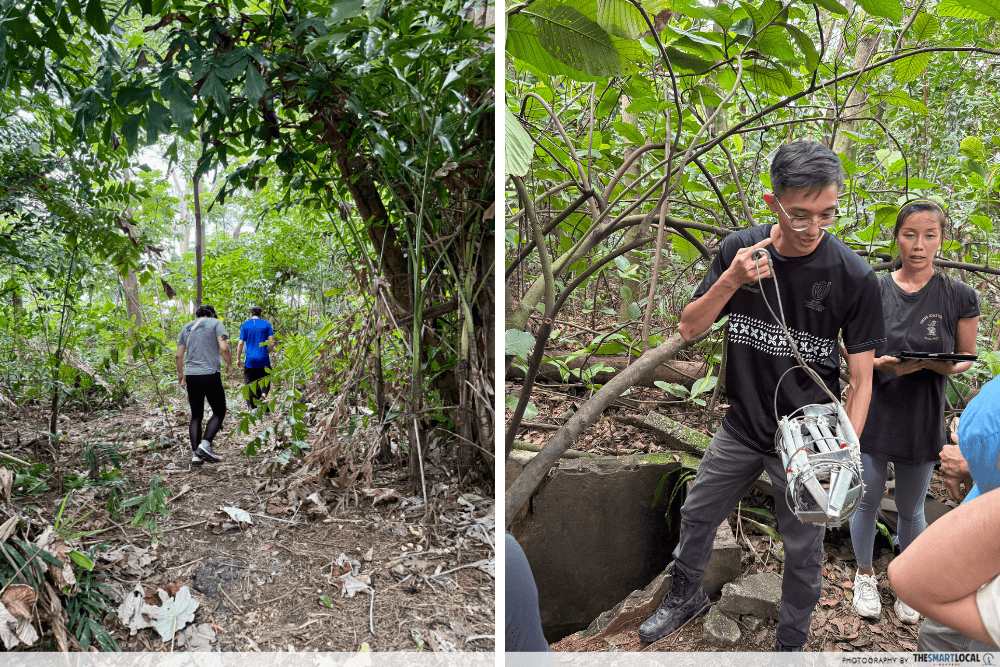
It’s an easy 5-minute hike through the forest to the air raid shelter and is only accessible by going down a ladder.
In fact, these refugee kids used to play in a nearby empty air raid shelter from WW2 times. This network of underground tunnels built by the British was only rediscovered in the 2000s. So much vegetation had grown around them that they lay hidden for years.

Beware of giant geckos and small snakes that might be creeping about in the dark.
This is where a torchlight would come in handy. It’s pretty dark once you’re underground but it’s worth going into if you’re not too bothered by claustrophobic spaces and reptiles. We were told they are mostly harmless.
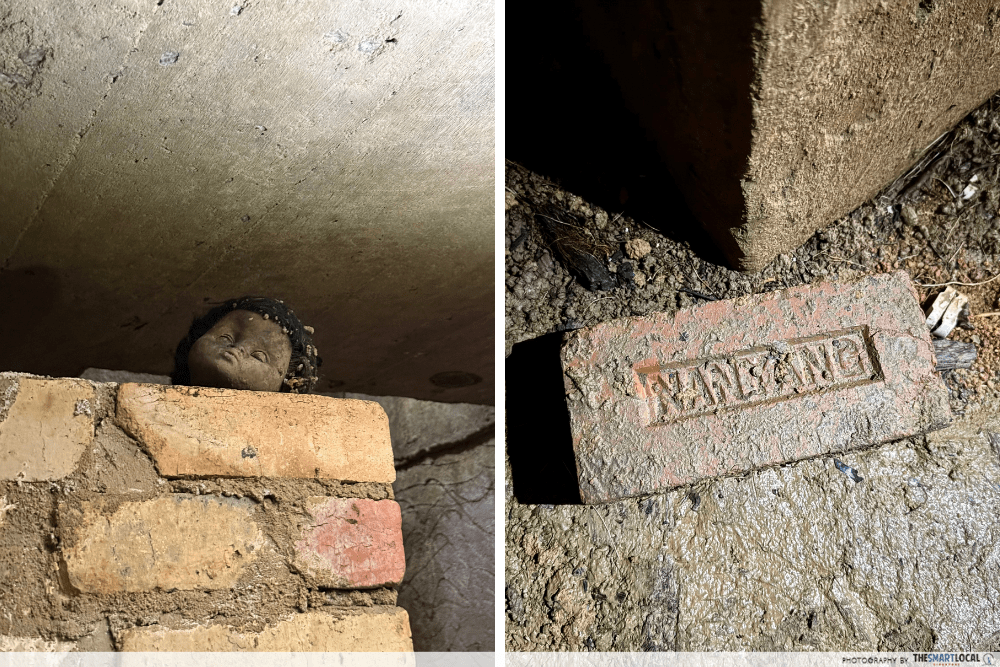
A child’s doll – the head, anyway – and a brick representing preserved moments in history.
The guides tell a few more stories and theories as to what the left-behind remnants could mean. Some mysteries remain unsolved like where the squiggly lines on the walls came from but that’s where your imagination can take over.

We’ll leave the rest for you to discover as you descend into the depths of the shelter and shine your torch around. Let’s just say there are a few interesting things to learn about what went on during the war.
The tour ends at View Road with a few parting words from the lovely guides. Please provide feedback so they can continue to improve the experience and are encouraged to keep going. Each guided tour consists of 18-20 pax on average and it’s heartening to see that many people are interested in discovering the secret places of Singapore.
What to bring & how to prepare for the tour
While there is a need to be on your feet for a good 3.5 hours, there isn’t a lot of strenuous activity involved in the tour. We’d say it’s suitable for most people with moderate physical health.
Things to take note of:
- Use the toilet before the tour because there isn’t one in the plant. The nearest one is at the coffee shop under the nearby HDB block.
- The same coffee shop has food and drinks so you can have breakfast before the tour starts or grab a small bite before heading to the second location.
- Wear covered shoes and long pants that are comfortable enough for hiking through the forest and climbing stairs.
What to pack:
- 1L water bottle
- Insect repellent
- Torchlight
- Umbrella or poncho
- Portable fan
- Wet wipes
If you’re wondering whether there’s a wet weather plan, there isn’t. In Amanda’s words, “embrace it” – very fitting for embarking on a true adventure. The tour continues rain or shine, so just come prepared with whatever you need.
How to get to the starting point of the tour

If you’re taking public transport, catch Bus 903 from Woodlands Bus Interchange, just below Woodlands MRT. Alight at Block 206, Stop ID: 46159, and walk through the HDB car park, past the fitness corner to the entrance gate.
If you are taking a taxi or driving, alight at Block 215, Singapore 730215, or park your car there. To get to the next location, park along Dahan Road and cross the road to View Road.
Is it worth attending the Industrial Relics & Wartime Secrets Tour?
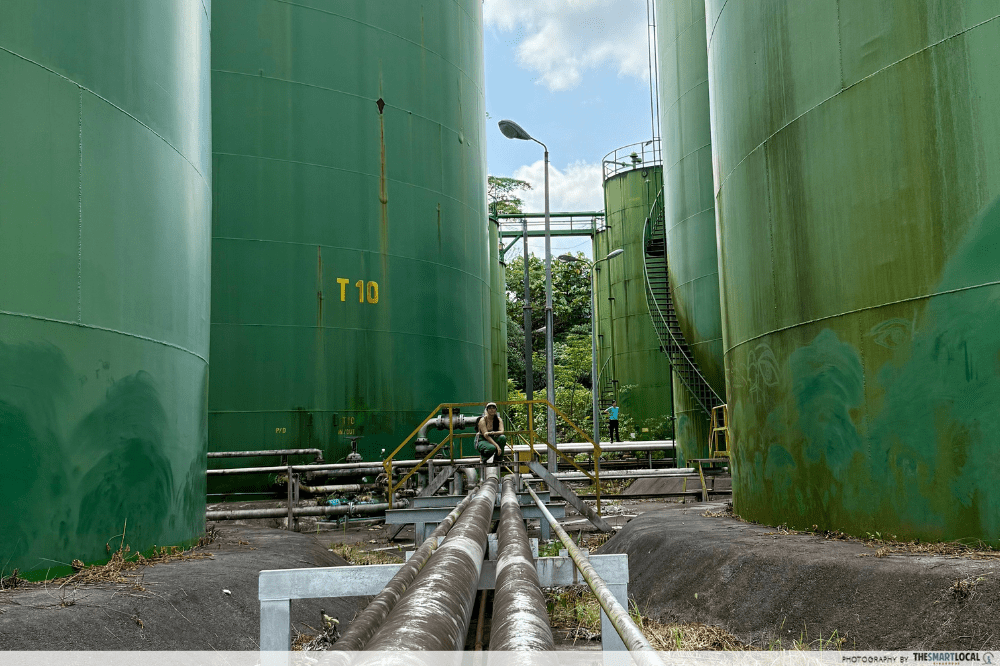
That would be a resounding yes. The place sells itself just by how interesting it is and the engaging guides are simply icing on the cake. The excitement of getting to see places that often go unnoticed because they are so well hidden away from society is unparalleled.
What we can guarantee is that the tour is not boring. Instead of spewing facts at you, Stanley and Amanda capture your attention with storytelling, and that is the experience you are paying for. Not to mention the resources that have gone into obtaining a license to operate the tour on restricted premises and finding people to gather stories.
BTW, folks of Hidden Heritage Tours also conduct 2 others: Fort Canning Conspiracies where they explore the history of Fort Canning Park and The Forest Labyrinth where they bring you to the Marsiling Tunnels.
Explore these forgotten spots in SG with the Industrial Relics & Wartime Secrets Tour
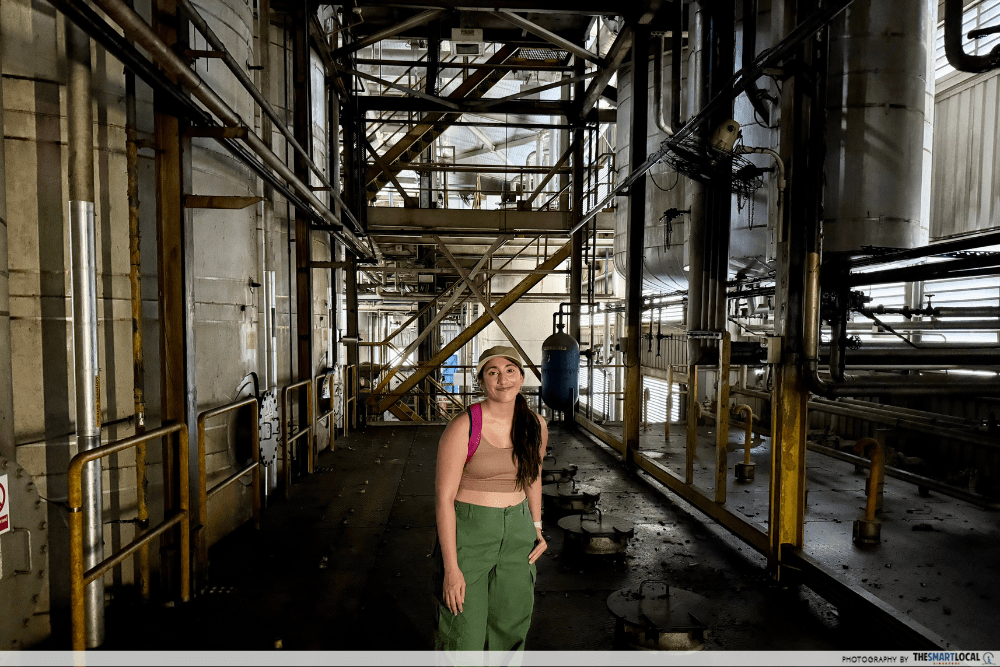
Venture off the beaten path, transport yourself back in time, yada yada yada… As cheesy as it sounds, we loved spending our Saturday morning with this group doing just that. We’re glad to know that such forgotten spaces are being kept alive through stories being passed on from older generations to newer ones.
Find out more about the Industrial Relics & Wartime Secrets Tour
Admission: $98/pax
Dates: Saturdays
- Upcoming tours: 8th & 22nd March, 12th & 26th April, 10th & 24th May, 14th & 28th June
Time: 9am-12.30pm
Meeting point: Former Shell Lubrication Blending Plant (Google Maps)
More abandoned places in Singapore:
Other WW2 sites in SG you can explore:
Photography by Aditi Kashyap
